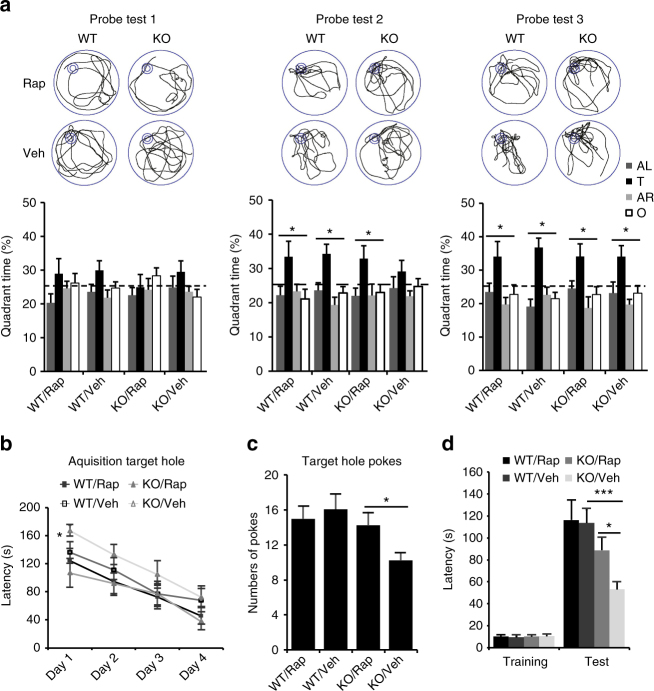Fig. 5.
Rapamycin treatment rescues behavioral deficits in Phf8 null mice. a Percentage time spent in each quadrant during the probe trials and representative swim trajectory of each group are evaluated in WT and Phf8 KO mice with vehicle or low-dose rapamycin treatment. (WT/Veh, n = 12; WT/Rap, n = 11; KO/Veh, n = 12; KO/Rap, n = 11; paired two-tailed t-test, *p < 0.05). (Veh, vehicle injection; Rap, rapamycin treatment). b In Barnes maze, latency to reach the target hole is shown during training days. (WT/Rap, n = 11; WT/Veh, n = 12; KO/Rap, n = 10; KO/Veh, n = 10; unpaired two-tailed t-test, *p < 0.05). c Probe trial on day 5 is used to assess spatial memory retention. Number of pokes in target hole during the probe trial (90 s) are calculated and averaged (WT/Rap, n = 11; WT/Veh, n = 12; KO/Rap, n = 10; KO/Veh, n = 10; unpaired two-tailed t-test, *p < 0.05). d Phf8 KO mice show deficit in the passive avoidance test and rapamycin treatment rescues the deficit. The bars indicate the mean latencies to enter the dark chamber on the training day (left) and 24 h later on the retention day (right). (WT/Rap, n = 9; WT/Veh, n = 13; KO/Rap, n = 9; KO/Veh, n = 10; unpaired two-tailed t-test, *p < 0.05, ***p < 0.001)

